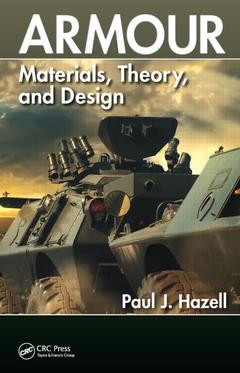Description
Armour
Materials, Theory, and Design
Author: Hazell Paul J.
Language: English
Subjects for Armour:
Keywords
Shaped Charge Jet; Survivability and Onions; Blast Wave; The Disposition of Armour; Flyer Plate; The Disposition of Armor; Ballistic Limit Velocity; Stress and Strain; Armour Applications; Elasticity; Ballistic Penetration; Strength; Bulk Sound Speed; Hardness; Blast Loading; Small-Arms Ammunition; Elastic Wave; Higher-Calibre KE Rounds; Dynamic Yield Strength; Shaped-Charge; Shaped Charge Warhead; Explosively Formed Projectiles; Armour Materials; High-Explosive Squash Head; Projectile Penetration; Fragments; Impact Engi
Approximative price 181.72 €
In Print (Delivery period: 13 days).
Add to cartSupport: Print on demand
Description
/li>Contents
/li>Biography
/li>
Highlights Recent Advances in Materials/Armour Technology
As long as conflict exists in the world, protection technologies will always be in demand. Armour: Materials, Theory, and Design describes the existing and emerging protection technologies that are currently driving the latest advances in armour systems. This book explains the theory, applications, and material science aspects of modern armour design as they are used in relation to vehicles, ships, personnel, and buildings, and explores the science and technology used to provide protection against blasts and ballistic attacks. It covers materials technologies used in protection; addresses the system effects of adding blast-wave shaping to vehicles, as well as the effect on the human body; and outlines ballistic testing techniques.
Takes a Look at How Armour Works
The book discusses ceramics for armour applications; transparent armour; and metals for armour applications (including aluminium alloys, magnesium alloys, titanium alloys and steels); as well as composite armour systems; explosive reactive armour systems with reference to defensive aid suites for vehicles; and wound ballistics. In addition, the author lists more than 100 references for advanced study and further reading.
Armour: Materials, Theory, and Design introduces a variety of armour technologies, outlines modern threats and dangers applicable to protection technology, and aids readers in implementing protective structures that can be used in battle, conflict, military zones, and other related environments.
Introduction.An Introduction to Materials. Bullets, Blast, Jets and Fragments. Penetration Mechanics. Stress Waves. Metallic Armour Materials and Structures. Ceramic Armour. Woven Fabrics and Composite Laminates for Armour Applications. Human Vulnerability. Blast and Ballistic Testing Techniques. Glossary. References.
Paul J. Hazell is a professor of impact dynamics at UNSW Australia. His main research interests are shock loading, penetration mechanics, and lightweight armour optimization. He also teaches courses related to terminal ballistics and armour design at the Australian Defence Force Academy in Canberra. Prior to coming to Australia, he worked for Cranfield University at the Defence Academy of the United Kingdom at Shrivenham. Hazell graduated from the University of Leeds in 1992 with a BEng (Hons) degree in mechanical engineering, and pursued his doctoral studies at the Shrivenham campus of Cranfield University (at the Royal Military College of Science).
These books may interest you

The Science of Armour Materials 230.42 €



